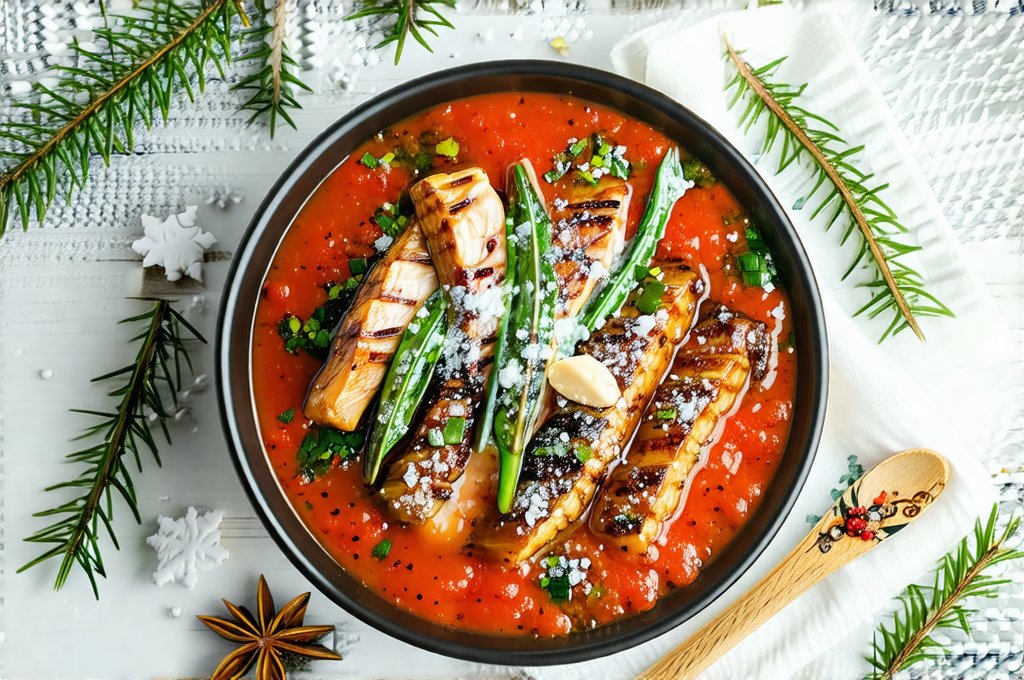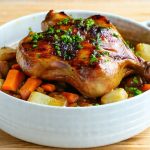The arrival of winter often brings with it changes in our diet – comfort foods become more appealing, cravings for carbohydrates increase, and we tend to spend more time indoors, potentially impacting our digestive systems. For individuals managing Irritable Bowel Syndrome (IBS) or other gut sensitivities, this seasonal shift can be particularly challenging. Many traditional winter meals rely heavily on ingredients high in FODMAPs – Fermentable Oligosaccharides, Disaccharides, Monosaccharides and Polyols – which can trigger uncomfortable symptoms like bloating, gas, stomach pain, and altered bowel habits. However, embracing delicious and nourishing food doesn’t have to mean sacrificing gut health during the colder months. It simply requires a bit of knowledge and creativity in the kitchen.
This article will explore how to navigate winter eating while adhering to a low-FODMAP diet, focusing on warming, satisfying recipes that prioritize both flavour and digestive comfort. We’ll delve into practical strategies for adapting favourite dishes, substituting high-FODMAP ingredients with gut-friendly alternatives, and incorporating seasonal produce in a way that supports your wellbeing. The goal is to demonstrate that a low-FODMAP lifestyle isn’t about restriction; it’s about empowerment – taking control of your diet to enjoy the pleasures of food without compromising your health. It’s about finding ways to still indulge in comforting winter meals, and enjoying them fully without fear of digestive upset.
Low-FODMAP Winter Staples & Ingredient Swaps
Building a low-FODMAP pantry is the first step towards confident winter cooking. Familiarize yourself with common high-FODMAP ingredients that often feature in seasonal dishes and their readily available substitutes. Onions and garlic, staples in many savoury recipes, can be replaced with garlic-infused oil (using only the flavour, not the actual pulp) or asafoetida (hing), a spice used sparingly to mimic allium flavours. Wheat-based products can be swapped for gluten-free alternatives like rice flour, almond flour, or quinoa. Apples and pears, popular winter fruits, are high in fructose; opt instead for bananas (in moderation), blueberries, oranges, or strawberries. Similarly, honey and high-fructose corn syrup should be replaced with maple syrup or a small amount of stevia.
Beyond specific ingredient swaps, consider adjusting cooking methods. Roasting vegetables often enhances their flavour and digestibility compared to steaming or boiling. Utilizing herbs and spices – ginger, turmeric, rosemary, thyme – not only adds depth to your dishes but also offers anti-inflammatory benefits. Furthermore, portion control is key; even low-FODMAP foods can trigger symptoms if consumed in excessive amounts. Understanding your individual tolerance levels is crucial, as sensitivities vary significantly from person to person. Keeping a food diary can be immensely helpful in identifying personal triggers and tailoring your diet accordingly.
Finally, don’t underestimate the power of planning! Batch cooking low-FODMAP staples like soups or stews on weekends ensures you always have a healthy and comforting meal readily available during busy weeknights. This reduces the temptation to grab quick, potentially high-FODMAP options when time is limited. Investing in quality containers for portioning and storing leftovers also contributes to a more organized and gut-friendly kitchen environment. Considering meal prep can be a grounding tool for increased comfort.
Warming Low-FODMAP Soups & Stews
Soups and stews are quintessential winter comfort foods, offering warmth, hydration, and a canvas for incorporating nutrient-rich ingredients. Thankfully, many delicious variations can be easily adapted to fit a low-FODMAP diet. Chicken soup, a classic remedy for colds and flu, is naturally low in FODMAPs when made with appropriate broth and vegetables. Avoid adding onions or garlic, instead relying on herbs like thyme and parsley to build flavour. Carrot and ginger soup provides a vibrant and warming alternative, utilizing the natural sweetness of carrots and the digestive benefits of ginger.
Beef stew can be similarly modified by using gluten-free flour for thickening and substituting onion with asafoetida. Remember to use lactose-free beef broth or make your own from scratch to avoid dairy-related sensitivities. Root vegetables like parsnips, swedes, and carrots are excellent additions to stews, offering both flavour and essential nutrients. When creating these dishes, focus on layering flavours – building depth with spices, herbs, and slow simmering techniques. This allows the natural tastes of the ingredients to shine through without relying on high-FODMAP components. Learning how to find comfort foods can really enhance your experience!
Low-FODMAP Chicken & Vegetable Soup
This comforting soup is perfect for a chilly evening and easy to customize based on your preferences.
- In a large pot, sauté 2 chopped carrots, 2 chopped celery stalks, and 1 leek (white part only) in olive oil until softened.
- Add 6 cups of lactose-free chicken broth, 200g of diced chicken breast, 1 teaspoon of dried thyme, and ½ teaspoon of salt.
- Bring to a boil, then reduce heat and simmer for 20 minutes or until the chicken is cooked through.
- Add 1 cup of chopped spinach during the last 5 minutes of cooking.
- Serve with a sprinkle of fresh parsley.
Low-FODMAP Carrot & Ginger Soup
A vibrant and warming soup that’s packed with flavour.
- Sauté 1 diced leek (white part only) in olive oil until softened.
- Add 500g of peeled and chopped carrots, 2cm of grated ginger, and 4 cups of lactose-free vegetable broth.
- Bring to a boil, then reduce heat and simmer for 20 minutes or until the carrots are tender.
- Use an immersion blender to blend the soup until smooth. Season with salt and pepper to taste. A swirl of coconut cream (small amount) can be added for extra richness.
Low-FODMAP Beef & Parsnip Stew
A hearty and satisfying stew perfect for a cold winter’s day.
- Brown 500g of diced beef in olive oil. Remove from pot.
- Sauté 2 chopped parsnips, 1 diced carrot, and ½ teaspoon asafoetida (hing) until softened.
- Add the browned beef back to the pot along with 4 cups of lactose-free beef broth, 1 tablespoon of gluten-free flour, and 1 teaspoon of dried rosemary.
- Bring to a boil, then reduce heat and simmer for at least 2 hours or until the beef is tender. Season with salt and pepper to taste.
Remember that managing gut health is a personal journey. Experimenting with different ingredients, paying attention to your body’s signals, and seeking guidance from a registered dietitian can empower you to enjoy delicious and nourishing food throughout the winter season – and beyond – without compromising your wellbeing. It’s about finding balance and creating a sustainable approach that works for you. You may also want to consider balancing macronutrients as part of this process, as well as incorporating morning gut priming rituals.


















